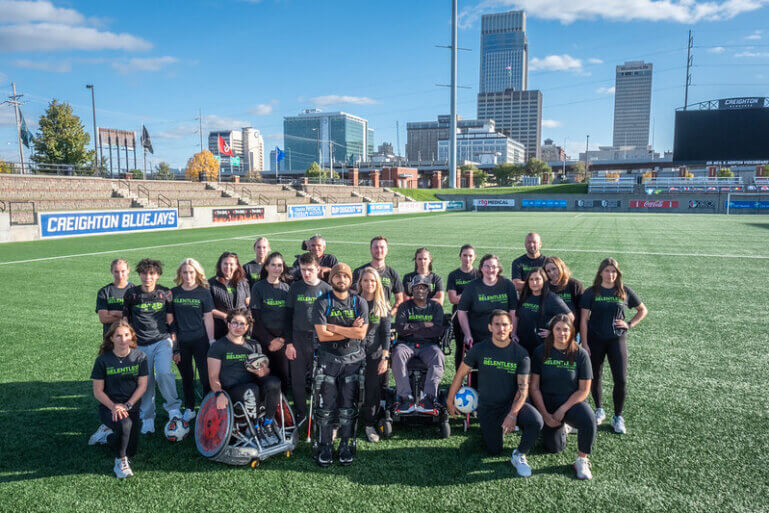Think for a moment. What does care and recovery look like for you? We might imagine a hospital, where the goal is to fix an injury or treat an illness. We go there, and over the course of days or weeks, what was broken is fixed. Then, we go home and can continue our lives.
If that were the mindset at QLI, we would be doing a massive disservice to our clients because a catastrophic injury is not like any other injury, and neither is the recovery. Recovery from a spinal cord injury, brain injury, or stroke involves rebuilding a life. While it consists of overcoming physical and cognitive impairments – symptoms of the injury – it also requires reconnecting each individual to their identity, purpose, and a meaningful path in life. It also involves providing resources, a support system, and tools and strategies to enable our clients to further their recoveries and lives after formal rehabilitation ends. There is no “fix,” but a wholesale intent on recovery of the individual and life they live, rediscovering it.
“Our Tri-Dimensional Rehab® Model was devised by founding CEO Dr. Kim Hoogeveen,” notes current President and CEO Patricia Kearns. “As a behavioral psychologist by trade, he understood the immense benefit of treating the person, not just their symptoms, and doing this in an environment filled with optimism and hope for the future.” QLI’s Tri-Dimensional Rehab® model operates to get to the heart of what motivates each individual and build a recovery plan around their real life – not a sterile healthcare environment. QLI’s proprietary rehab model is driven by a collaborative team that implements this “real world” rehab with the right amount of intensity, support, and maximal repetition to facilitate change and recovery – or neuroplasticity.
It is perhaps easiest to understand Tri-Dimensional Rehab® by breaking it down into its three components, and viewing them as all residing under an umbrella of care and work. Progress in recovery occurs at the intersection of all three. Dimension One—Nursing Care and Medical Stabilization—ensures that individuals are medically stable and healthy so they can make the most of their rehabilitation. Dimension Two—Functional Skill Restoration addresses efforts to facilitate neuroplasticity, maximize motor and cognitive recovery, and develop functional mobility and life skills. Both of these work in service to Dimension Three—Life Path Services—which continues to permeate and resonate through the other two. “Any team member,” notes Patricia, “always facilitates recovery within the context of who that client is and what a meaningful life path looks like.” In some ways, the first dimension serves as the foundation for all rehabilitation efforts because, if an individual is not well, nothing in the realm of rehabilitation can progress. But how can a person get healthy if there is not a fundamental understanding of who that person is? Are they a parent, a spouse, a provider for their household? What role do they play in their community?
No dimension should be addressed in a silo, and the dimensions need not operate in implied chronological order. Application of the model is most effective and efficient when attention focuses at the intersection of the three dimensions. “It is where,” as Patricia says, “the magic happens.” Far from easy to accomplish, this highlights an important precursor to successful implementation of the model. Tri-Dimensional Rehab® only flourishes in the presence of great culture—a culture committed to mission and excellence. Each team member has a specialized area of expertise. That expertise, though, must be combined and challenged through healthy intellectual conflict to reach common goals and best serve clients. The culture must prioritize teamwork, optimism, curiosity, creativity, and achievement as it strives to create community. Through the culture and vibrancy of QLI’s environment, motivation resonates with clients. With motivation comes specificity and the tailoring of programs around the individual. Along with ever-present repetitions that promote engrained patterns, progress results by way of neuroplasticity.
Complex and abstract as it is, there is no other way to effectively serve individuals who have suffered a life-altering injury. It’s environmental in practice with community at the heart, making Tri-Dimensional Rehab® a stalwart look at what rehabilitation ought to be.
Categories: Culture, Tri-Dimensional Rehab

